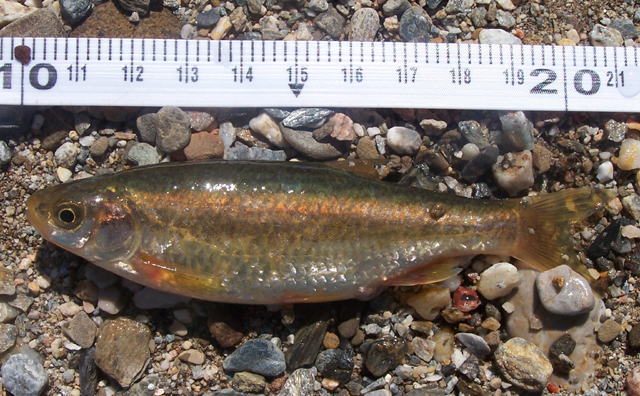| Leuciscidae (Minnows), subfamily: Leuciscinae |
| 9.5 cm SL (male/unsexed); max. reported age: 4 years |
|
demersal; freshwater |
| Europe: Nedas to Evrotas drainages in southern Peloponnese, Greece. |
|
Diagnosed from Tropidophoxinellus hellenicus by having the following characters: mouth terminal, upper jaw projecting slightly beyond lower jaw; and 40-44 + 2-3 scales along lateral line (Ref. 59043). |
| Found in lowland water courses with little current (Ref. 26100). Also inhabits springs and stretches of streams with moderate current. Most populations occur in small streams and are very sensitive to water abstraction and pollution (Ref. 59043). Feeds on invertebrates, plants (Ref. 26100) and small aquatic insects (Ref. 59043). Threatened due to pollution, habitat destruction (Ref. 26100) and water abstraction (Ref. 59043). |
|
Vulnerable (VU); Date assessed: 31 January 2006 (B1ab(ii,iii,iv,v)+2ab(ii,iii,iv,v)) Ref. (130435)
|
| harmless |
Source and more info: www.fishbase.org. For personal, classroom, and other internal use only. Not for publication.
